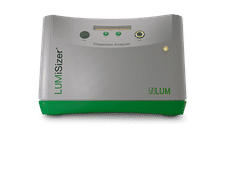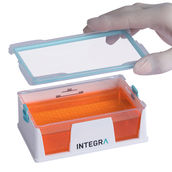Shampoo consuming Bacteria
Why Pseudomonas is able to withstand attacks of hygiene
Advertisement
The pernicious bacterium Pseudomonas aeruginosa is able to persist in the human respiratory tract for long periods of time and also frequently causes acute infections in open wounds especially following open surgery. It is able to resist common house-hold detergents making it difficult to eradicate by normal hygiene routines.
Scientists from the German Research Centre of Biotechnology (GBF) and the Hannover Medical School (MHH) have now identified the reason why these bacteria are resistant to detergents: Pseudomonas secretes an enzyme SdsA that cleaves SDS or Sodium dodecylsulfate - a constituent of many foaming personal hygiene products such as toothpaste, shampoo and shower gels. SDS is a detergent that kills most bacteria by dissolving their surrounding membrane. Pseudomonas aeruginosa protects itself by secreting SdsA, which cleaves and inactivates SDS.
Using X-ray crystallography, the team that includes scientists from Göttingen and Darmstadt in addition to those from Braunschweig and Hannover solved the three-dimensional structure of SdsA at near atomic resolution permitting them to watch the enzyme as it cleaves SDS. The researchers discovered that the bacteria absorb the resulting fragments of SDS utilizing them as nutrients. The ability of Pseudomonas to resist SDS and to utilize the cleavage products probably explains why this pathogen is frequently found in locations that we prefer to maintain in pristine condition: these include bathroom basins, dishwashers and shampoo bottles. "Apart from the risk to human health, the economic damage can be daunting", concludes GBF group leader Dr. Wolf-Dieter Schubert, "Recalling contaminated products is not only costly, but is particularly damaging to the carefully maintained image of the companies involved."
While SdsA helps to make Pseudomonas dangerous to humans, the cleavage of SDS has its beneficial aspects as well. The bacteria, which live in rivers and even sewage treatment plants, destroy SDS and similar contaminants introduced into the environment as part of normal human behavior.
Original publication: G. Hagelüken, T. M. Adams, L. Wiehlmann, U. Widow, H. Kolmar, B. Tümmler, D. Heinz, W.-D. Schubert; "The crystal structure of SdsA1, an alkylsulfatase from Pseudomonas aeruginosa, defines a third class of sulfatases." Proceedings of the National Academy of Sciences 2006, Vol. 103, N. 20, pp. 7631-7636.
























































